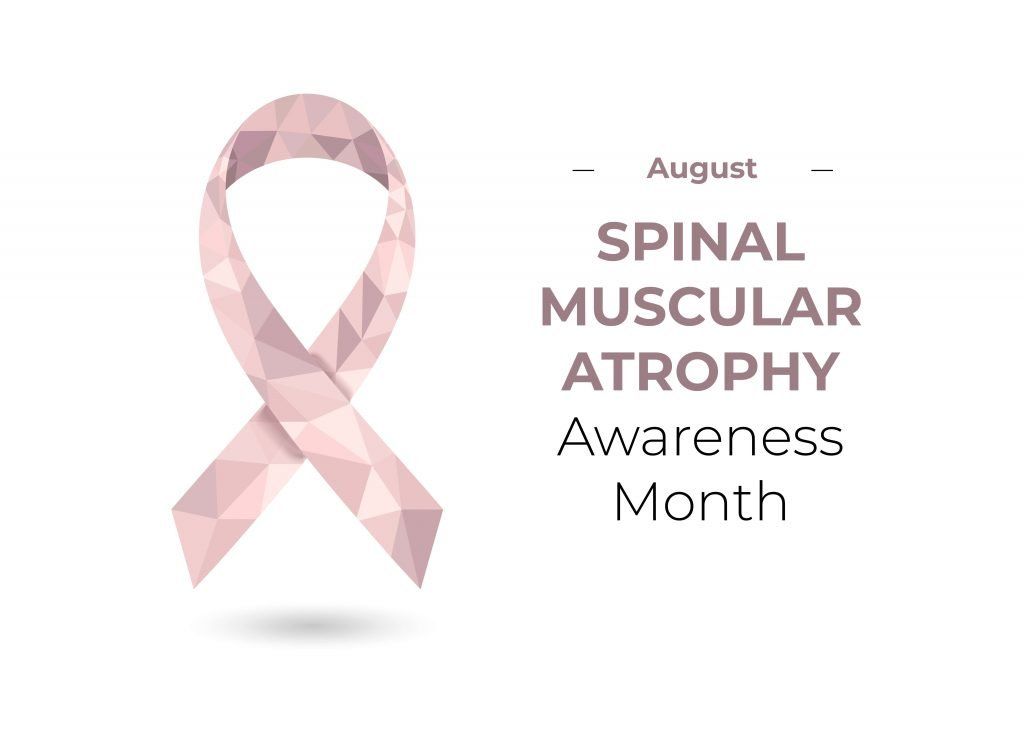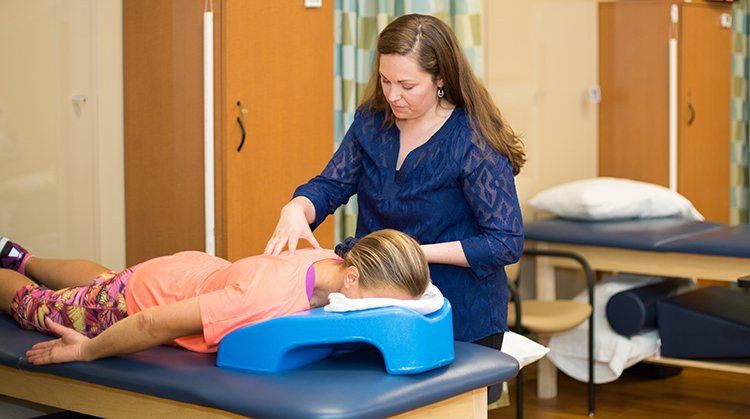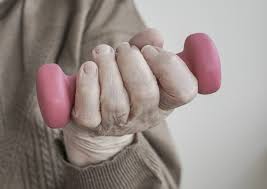Physical Therapist's Guide to Chronic Pain Syndromes
Chronic pain is a condition that occurs when the brain concludes there is a threat to a person's well-being based on the many signals it receives from the body. This condition can and often does occur independently of any actual body tissue damage (due to injury or illness), and beyond normal tissue healing time.
It is estimated that 116 million Americans have chronic pain each year. The cost in the United States is $560–$635 billion annually for medical treatment, lost work time, and lost wages.
The causes of chronic pain vary widely. While any condition can lead to chronic pain, there are certain medical conditions more likely to cause chronic pain. These include:
- Trauma/injury
- Diabetes Mellitus
- Fibromyalgia
- Limb amputation
- Reflex Sympathetic Dystrophy
Some diseases, such as cancer and arthritis, cause ongoing pain. With chronic pain, however, pain is created in the nervous system even after physical tissues have healed.
Chronic pain affects each person experiencing it differently. In some cases, chronic pain can lead to decreased activity levels, job loss, or financial difficulties, as well as anxiety, depression, and disability. Physical therapists work together with chronic pain patients to lessen their pain, and restore their activity to the highest possible levels. With treatment, the negative effects of chronic pain can be reduced.
What Is Chronic Pain?
Pain is an unpleasant sensation that we usually associate with injury or tissue damage, but can actually be present in the absence of tissue damage as well. Pain can be acute or chronic.
Acute pain lasts for a short time – up to 12 weeks. It is a warning that tissue damage has occurred or may occur, or to help us prevent injury or disease. For instance, if we touch a hot stove, the body sends a danger message to the brain that there is a threat to tissues in order to prevent further injury. A sore foot can signal a need to change your footwear. In some cases, the danger messages may be due to some disease process, and your brain may interpret those messages as pain. This can cause you to seek medical attention – diagnosis and treatment – for what may be a serious condition. Signaling pain in this manner is the body's way of protecting us and is a good thing.
Chronic pain is any discomfort or unpleasant sensation that lasts for more than 3 months – or beyond an expected normal healing time. Often, those who have chronic pain believe they have an ongoing disease or that their body has not healed, when this may not be the case. Chronic pain is likely not warning you of possible injury or danger; instead, the pain centers in the brain may be causing you to hurt even though there are no new causes of pain occurring in the body. Anyone can develop chronic pain, at any age. The brain changes in chronic pain:
- When you are injured or develop a painful disease, nerves send information from the problem area to the brain.
- The brain analyzes this information coming from the body to determine if there is a threat to the body and whether action needs to be taken to prevent harm.
- When pain is constant or chronic, the brain and nervous system go on "high alert," becoming more sensitive.
- Cells that conduct sensation in the nervous system can also become more sensitive when on high alert, making it easier for the brain to interpret these sensations as a threat and thus cause you to have more pain. These changes in the brain and central nervous system induce and maintain chronic pain symptoms.
- When pain is chronic: Pain sensations are activated in the brain; The brain continues to interpret all sensations from the problem areas as danger, even when there is no more tissue damage occuring. This makes it easier for the pain centers in the brain to activate; Pain messages come from many different areas of the brain – areas that may control fight or fear reactions, movement, emotions, problem-solving, and learning. In fact, almost any system of the body can be affected by chronic pain.
- The brain and nervous system continue reacting by causing you to continue to be in pain. This process increases sensations, emotions, or thoughts about the problem area. At this point, any sensory input can activate the pain centers. Even thinking about it, or reading the word pain can trigger pain sensations. The pain is in the brain: In order to protect you, the brain is making the decision to increase the alert level for sensations you feel.
How Does it Feel?
How chronic pain feels varies with each individual; it is very personal. How often it occurs, how severe it is, or how long it lasts is not predictable from one person to another.
Common complaints related to chronic pain include:
- It may seem as if "everything hurts, everywhere."
- There may be sudden stabs of pain.
- It may seem as if the pain "has a mind of its own."
- You feel symptoms even if you are not doing anything to cause them.
- It feels worse when you think about it.
- It feels worse when you experience upsetting circumstances in your life.
- You may feel more anxious and depressed.
- You may feel your symptoms spread from one area to another area.
- You may feel fatigued, and afraid to do your normal activities.
These complaints are common when you have chronic pain. However, it does not necessarily mean that your physical condition is worsening; it may just mean that your system has become more sensitive.
Signs and Symptoms
Research finds the following signs may be associated with a chronic pain syndrome:
Fearfulness. It is easy to begin to fear increased pain when you have a chronic pain condition. As a result, you may begin to avoid activity. You may find that you rely more on family members to help with daily functions.
Body stiffness when you try to become more active. Stiffness may make you feel as if your body is less able to perform daily activities.
Deconditioning. Not moving your body results in less tolerance when you want to become more active. If you are inactive for a long time, muscles weaken and shrink from not being used. This can also increase your risk of falling.
Decreased circulation. Lack of activity decreases the circulation of much-needed blood to your cells. Tissues in your body may not get as much oxygen as they need. As a result, they may not be as healthy as they can be. This can cause you to feel fatigued, and lack energy.
Weight gain and/or a worsening of other conditions. Decreased activity can lead to unwanted weight gain. Added pounds and inactivity can aggravate symptoms of other conditions such as diabetes and high blood pressure. Chronic pain conditions are also commonly associated with feelings of anxiety or depression.
Increased use of medication. Chronic pain patients can have the tendency to increase their medication over time to seek relief.
Individual behaviors can include:
- Seeking out of many different doctors or health care providers and facilities to find relief.
- Difficulties with job performance. Some people with chronic pain even seek work disability.
- Avoidance of social situations or family members.
- When pain is ongoing, you may find you have feelings of bitterness, frustration, or depression. Some people report they have thoughts of suicide. If you are having these feelings, tell your doctor. This is important, so that you can get appropriate medications to help you feel better.
How Is It Diagnosed?
Your physical therapist will perform a thorough evaluation. He or she will:
- Ask specific questions about your past and present health and use of medication.
- Ask about your symptoms: their location, intensity, how and when the pain occurs, and other questions, to form a clear picture of your individual situation.
- Ask you to fill out pain and function questionnaires, to understand how the pain is affecting your daily life.
- Perform tests and movements with you. The tests help to identify problems with posture, flexibility, muscle strength, joint mobility, and movement. Special tests help to rule out any serious health problem such as pressure on a nerve or an underlying disease.
- Observe how you use your body for home, work, and social/leisure activities. This information helps your therapist prescribe a program that will boost your quality of life, and get you moving your best.
Imaging tests such as x-rays, computed tomography (CT) scans, and magnetic resonance imaging (MRI) are often not helpful for diagnosing the cause of chronic pain. However, if your physical therapist suspects that your pain might be caused by any serious underlying condition, he or she will refer you to your physician for evaluation.
Your physical therapist will work with your physician to provide the best diagnosis and treatment for your chronic pain.
How Can a Physical Therapist Help?
Your physical therapist will work with you to educate you on chronic pain, find solutions to improve your quality of life, and get you moving again! He or she will help you improve movement, teach you pain management strategies, and, in many cases, reduce your pain.
Not all chronic pain is the same. Your therapist will evaluate your clinical examination and test results and design an individualized treatment plan that fits you best.
Physical therapy treatments may include:
Education to improve your knowledge and understanding of chronic pain -- how it occurs, and what you can do about it. Your therapist will teach you how to manage your pain and help you work toward performing your normal daily activities again.
Strengthening and flexibility exercises to help you move more easily with less discomfort. Your therapist will design a program of graded exercises for you -- movements that are gradually increased according to your abilities. Graded exercises help you improve your coordination and movement, reducing the stress and strain on your body, and decreasing your pain. Carefully introducing a graded exercise program will help train your brain to sense the problem area in your body without increasing its danger messages.
Manual therapy , which consists of specific, gentle, hands-on techniques that may be used to manipulate or mobilize tight joint structures and soft tissues. Manual therapy is used to increase movement (range of motion), improve the quality of the tissues, and reduce pain.
Posture awareness and body mechanics instruction to help improve your posture and movement. This training helps you use your body more efficiently while performing activities and even when you are resting. Your therapist will help you adjust your movement at work, or when performing chores or recreational activities, to reduce your pain and increase your ability to function.
The use of ice, heat, or electrical stimulation has not been found to be helpful with chronic pain. Your physical therapist, however, will determine if any of these treatments could benefit your unique condition.
Can this Injury or Condition be Prevented?
Research shows that treating pain as soon as possible helps to prevent chronic pain. Don't ignore pain. Serious pain or pain that does not get better as expected should be treated.
Your physical therapist will work with you to develop strategies to prevent chronic pain, such as:
- Keeping up with your normal activities as much as possible.
- Avoiding bed rest. Long periods of bed rest will not improve your pain and may make it worse. Prolonged bed rest puts you at risk of other complications as well, including increased muscle weakness, bone loss, weight gain, and poor circulation.
- Improving posture. Your therapist will help you adjust your posture so your body can work at optimal efficiency to reduce joint stress and help to reduce your symptoms.
- Performing exercises to improve and restore your sense of the involved body area. Your therapist will also teach you exercises to restore movement (range of motion), mobilize nervous tissue (main component of nervous system), and rebuild your strength for performing routine daily activities.
- Introducing meditation, relaxation, and imagery exercises to help reduce stress and muscle tension.
- Learning fully about your condition. This will help you better understand what is occurring in your body, so you don't worry about every new ache, pain, or symptom.
- Maintaining healthy activity levels and improving your overall health.
Authored by Mary Kay Zane, PT, OCS. Reviewed by the MoveForwardPT.com editorial board.










